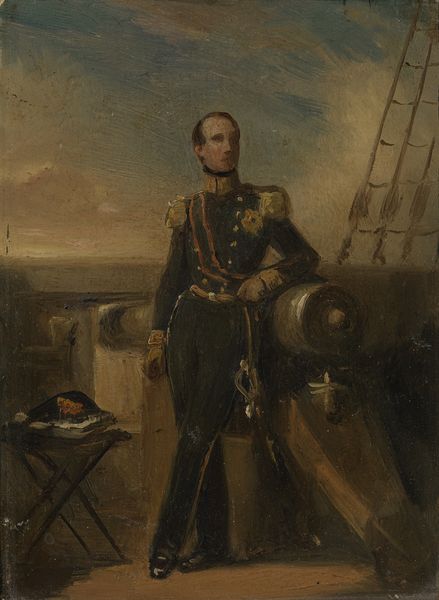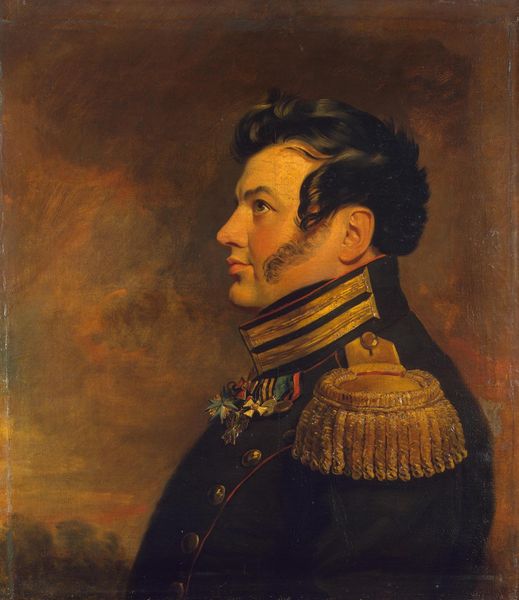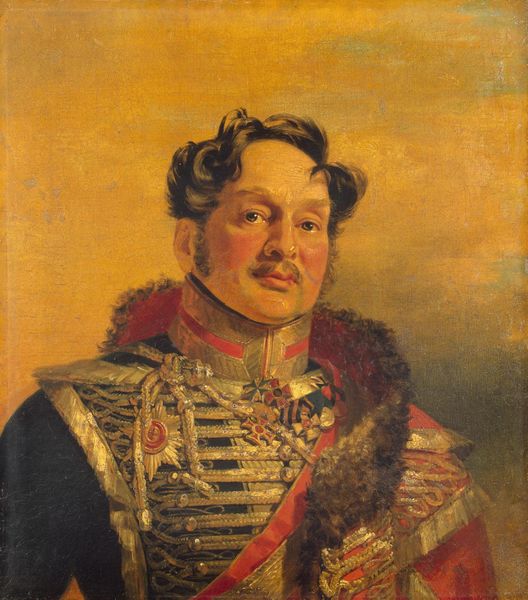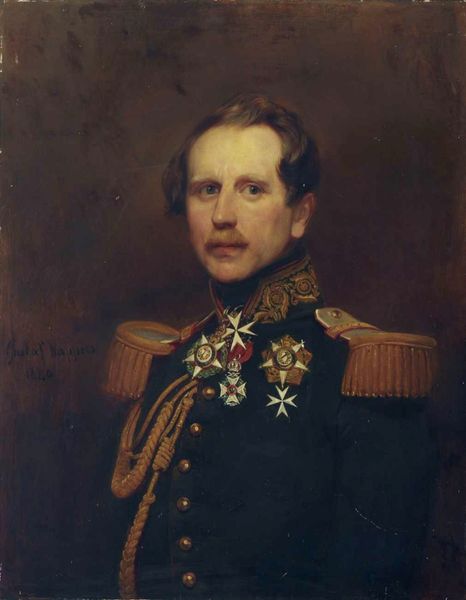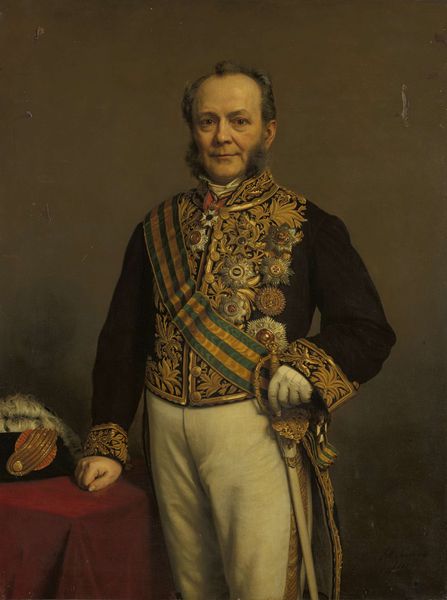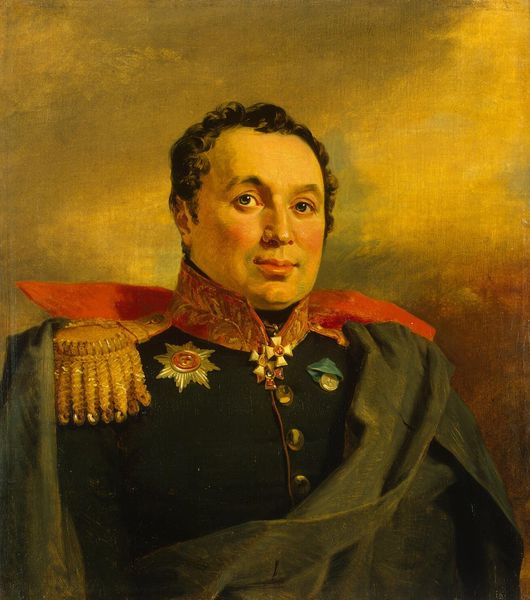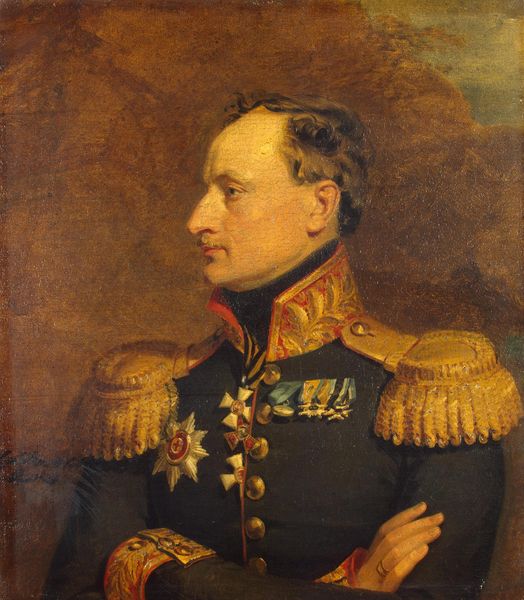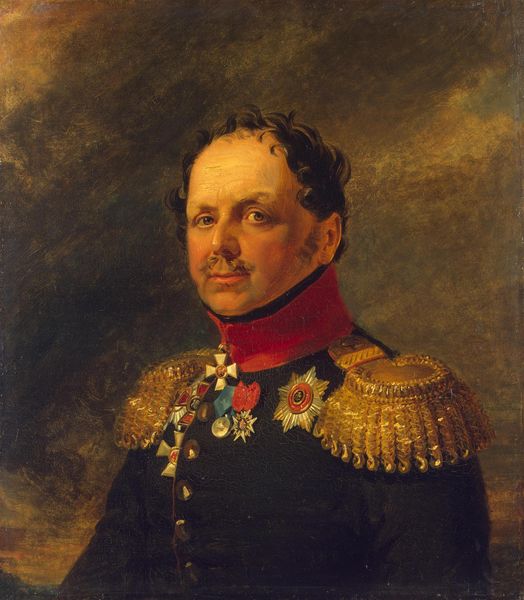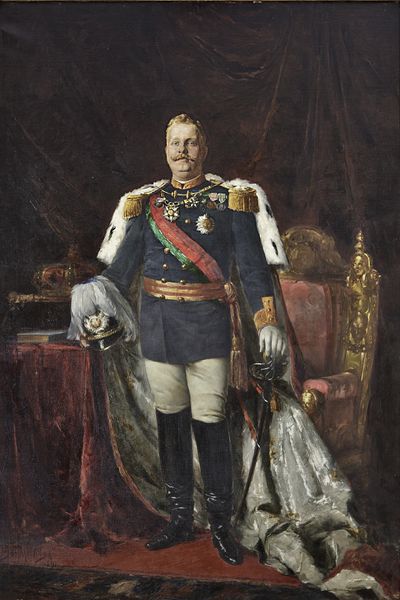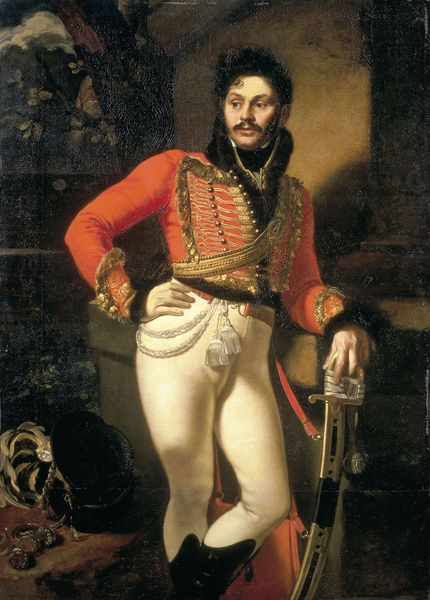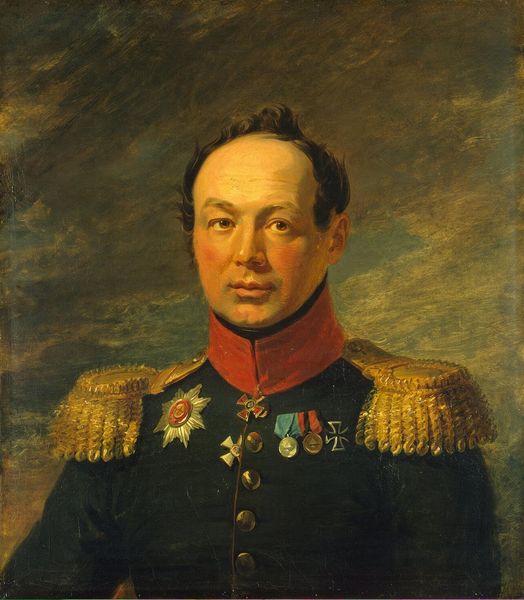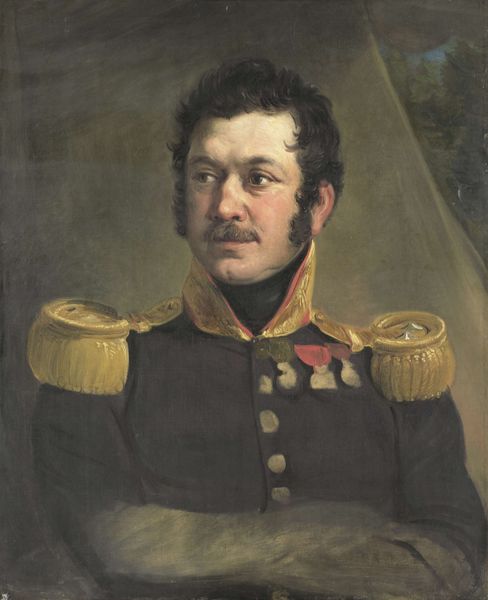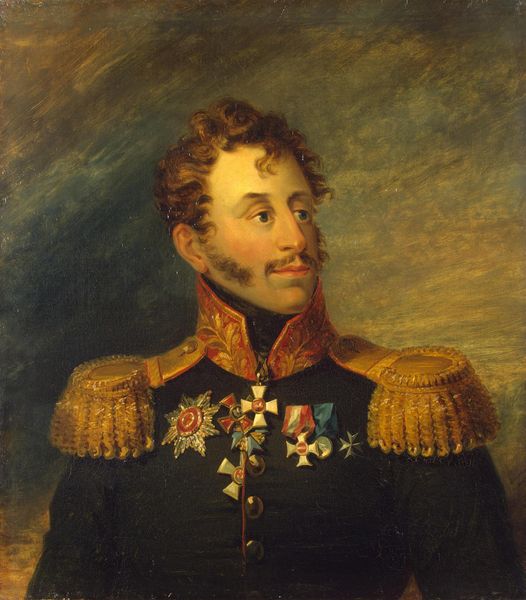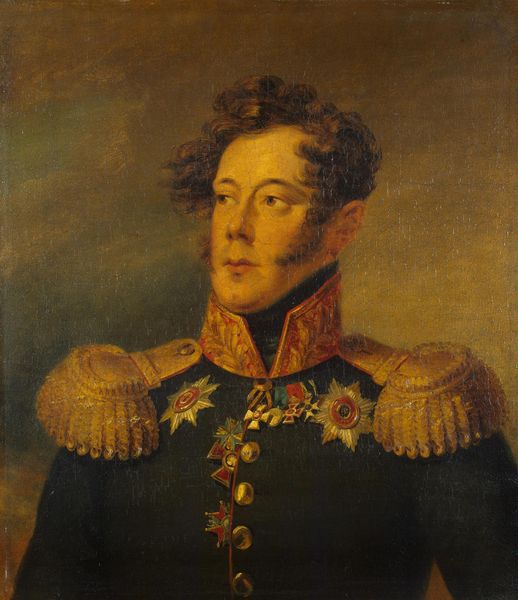
Copyright: Public domain
Editor: Here we have Konstantin Makovsky’s "Portrait of the Count Nikolay Muravyov-Amursky," created in 1863, using oil paints. The count’s confident stance and ornate attire seem to convey an air of imperial authority and dominance. What's your take on it? Curator: Absolutely. Looking at Muravyov-Amursky, we're not just seeing a man, but a figure representing 19th-century Russian expansionism. How complicit was Muravyov in perpetuating inequalities? The medals, the naval backdrop – it’s all carefully constructed symbolism meant to project power. But power for whom, and at what cost? Editor: I hadn't thought about it like that, focusing more on the portrait's aesthetic qualities. Curator: The romanticized, even idealized portrayal invites us to unpack the relationship between art and imperialism. We have to question the romantic narrative surrounding these figures. Was he really a 'great' man, or a cog in a system that perpetuated injustices? Editor: So, instead of simply accepting the image at face value, you are encouraging us to question its underlying message and historical context. What kind of actions led to these honors, and who suffered as a result? Curator: Exactly. By looking critically at this portrait, we can start to see it not as a celebration, but as an artifact of a specific moment in history, a moment defined by expansion and subjugation. What are the power dynamics at play in the subject and viewer relationship? Editor: This has shifted my perspective entirely! I see it as more than just a historical painting, it is an instrument that prompts social change and encourages difficult discussions. Thank you! Curator: Indeed, this is an invitation to a bigger dialogue. We need to engage more on how portraiture as propaganda upholds certain social and power structures and marginalises the voices of those affected.
Comments
No comments
Be the first to comment and join the conversation on the ultimate creative platform.
